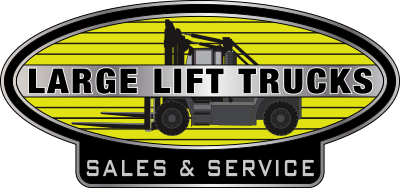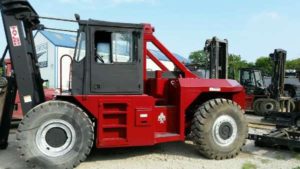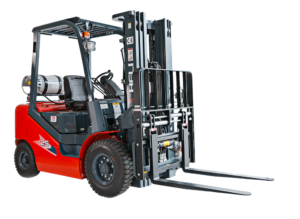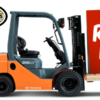WINTERIZING YOUR FORKLIFT TRUCK
Winter months in the US are tough, with some experts predicting 2018 to be the coldest winter in over 10 years. However, is your forklift ready for extremely low temperatures? Also, if you already have a maintenance plan chalked out, it is still vital to carry out pre-season inspection on your forklift to avoid unnecessary repair costs, inactive time, or other cold related problems. If have bought used forklifts for sale, get in touch with the dealer and previous owner to know the kind of maintenance the forklift has received and then decide the future service plan.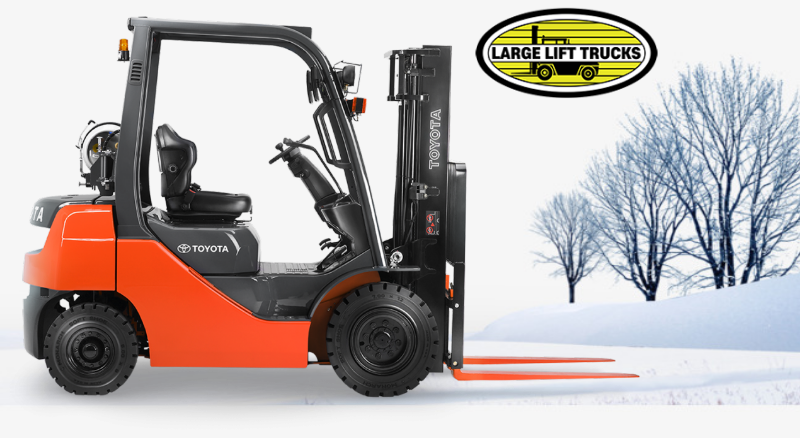
Winter Forklift Truck
Here are a few vital areas to inspect:
1. Engine and hydrauics
Cold winter conditions can cause moving components to slow down or jam completely, so always check they are generously greased. Hydraulic systems and engines need a longer warm-up time in the cold. Before initiation of any task, always allow several minutes for the forklift to idle without any load. It is also advisable to skim through and check each hydraulic utility. It will permit oil to circulate freely through the system. Cold ignitions will cost you money through augmented fuel consumption and greater wear and tear on parts.
Also, if possible avoid running duration less than 30 minutes. Often engines use a denser fuel composition during the first 30 minutes of ignition. That is the time when water vapour can accumulate in the oil and exhaust, because temperatures are too low to allow evaporation. To curb ice formation, clouding or crystallizing in hydraulic fluid, ensure you are using winterized fluids/ lubricants. Diesel engines too will need winterized fuel or additives to prevent coagulation.
2. Battery
Cold temperatures put major pressure on power, with many batteries discharging at a faster pace. However, preemptive care could save you a lot of worry, as well as money. Most importantly check the cables – ensure they are clean, and validate that the battery is at maximum charge / strength with a load tester. Make sure to confirm with forklift rental Houston Company, if you have hired one about the battery performance of the equipment.
3. Cooling System / antifreeze
A hydrometer can evaluate that the coolant is in good condition, also that the level of antifreeze is satisfactory. Hoses and other related parts can also leak and should be examined carefully for any damage.
4. Lights
The lights of forklift need to be clean and functional due to Low visibility levels and darker afternoons as winter approaches. Meanwhile, many forklifts still use halogen lights; however these must really be swapped out for LED bulbs. Not only LED bulbs are brighter and longer-lasting, but they brighten much better in cold temperatures and are adept at absorbing operational vibrations.
5. Tires
Air-filled tires must be examined for adequate air pressure. Also, all tire types (including solid) must be checked to make sure the tramp depth will handle snow and cold conditions. You can also fit your forklift tires with snow chains for extra grip on slippery surfaces. In addition, high traffic areas where the forklift operates must be kept free of obstacles or potential dangers. Ice, snow, and frozen mud can all hamper the safety of your forklift (and operator), so outdoor areas require higher grip and need to be snow ploughed or gritted regularly. Specialized forklift parts are also available that help you shovel snow as well as spread grit.
6. Cabs
In forklifts with inbuilt cab you will need to make sure the heater functions, all door fasteners are lubricated, and every windshield wiper moves freely and will handle the extra demands of freezing weather. Forklift shields are also accessible for any machines that lack bounded cabs. However, don’t use vinyl wraps which are reedy and brittle. On the other hand, corrugated hard plastic covers are more durable and better at directing rain away from the windshield.
7. Operators
Operating an equipment does not only involve a machinery, there is human element to it too. The operator must be equipped adequately for extreme temperatures with clothing such as high visibility vests, warm clothing, hats and gloves.
Drivers must keep speed under check and remember not to ignore the risks of challenging weather conditions. During winters our bodies need more energy to any work, sapping energy levels quicker and making tiredness an underrated peril. Operators need to take breaks to rest and replenish calories.
8. General inspections / services
Apart from the above mentioned points, one obvious, but sometimes overlooked area is to ensure your forklift has undergone all regular inspections and scheduled services. Scheduled maintenance is important since winter can be particularly ruthless to starters and chokes. A fast overall tune-up of mechanics and electrics is therefore, always a good idea. Before the start of each daily shift, routine checks must reiterate all equipment is operational and safe.
Most forklift dealers’ advice regular checks – which you can find in the operator’s manual. Overall hygiene is not an overstatement. After every operation the equipment must be cleaned. All wintertime debris must be removed. Snow, ice, mud, and grit can easily build up and hamper functioning.
At Large Lift Trucks, we provide forklift trucks on rental as well as maintenance services too. You can contact us get a maintenance schedule for your lift truck.
